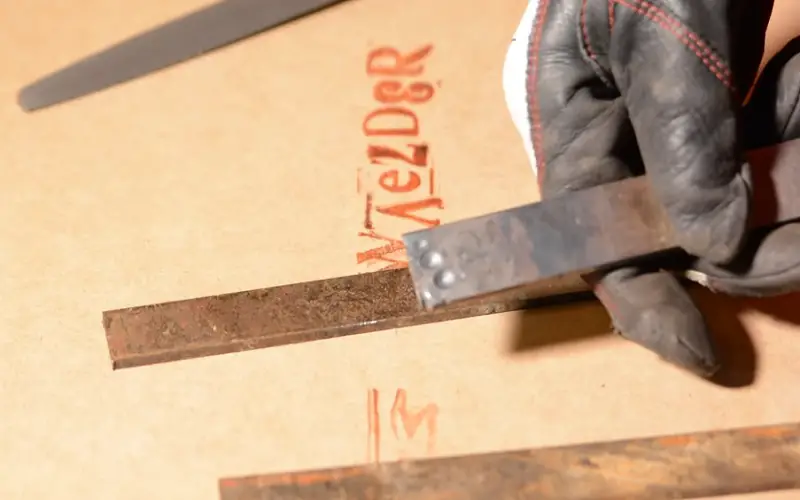Chisels are typically made from high carbon steel, which provides strength and durability. Chisels, tools used for cutting and shaping wood or metal, are commonly crafted from high carbon steel for their ability to withstand heavy-duty use.
Chisels are indispensable tools for craftsmen and woodworkers, essential for intricate carving or striking through stubborn surfaces with precision. In the hands of skilled artisans, these versatile tools can transform rough materials into works of art. The foundation of a high-quality chisel lies in the steel from which it is made.
Understanding the composition of the blade material is essential for selecting the right chisel for a specific task. High carbon steel, prized for its robustness and durability, is a commonly chosen material. Its exceptional strength allows chisels to endure rigorous use without compromising their sharpness.
This article provides insights into the steel used in the construction of chisels, delving into its properties, benefits, and reasons behind its popular choice among craftsmen.
Contents
History Of Steel Chisels
Steel chisels have been a crucial tool throughout history, serving a variety of purposes in woodworking and metalworking. Steel chisels are typically made from high carbon or alloy steel to provide durability and sharpness for precise cutting and carving.
This material composition allows for a versatile and long-lasting tool for various applications. Following the evolution of chisels made from steel unveils a fascinating journey through time.
Modern steel chisels owe their durability and precision to the centuries-old development of metallurgy. Ancient Chisels In ancient times, chisels were crafted from rudimentary materials like stone and bronze, essential for shaping various materials.
Stone chisels were used by early civilizations like the Egyptians and Mesopotamians for carving intricate designs into stone and wood. Bronze chisels were a significant advancement, offering better hardness and durability compared to stone.
Evolution of Steel Chisels With the discovery of iron, the manufacturing of chisels entered a new era. Iron chisels proved to be stronger and more versatile, capable of handling demanding tasks with improved efficiency.
The development of steel chisels revolutionized woodworking and metalworking, offering craftsmen unmatched precision and longevity in their tools. From hand-forged to mass-produced, steel chisels have become a staple in various industries, showcasing the enduring legacy of ancient chisels.

Types Of Steel Used In Chisels
Chisels are essential tools for woodworking, metalworking, and masonry. The type of steel used in chisels determines the tool’s durability and performance.
Various types of steel are used to create chisels, each with its own unique properties and applications.
Carbon Steel
Carbon steel, the traditional choice for chisels, is known for its durability and ability to hold a sharp edge. It consists of iron and carbon, and while it is relatively easy to sharpen, it may be prone to corrosion. Carbon steel chisels are suitable for woodworking and light-duty tasks.
High-speed Steel
High-speed steel is a popular choice for chisels due to its exceptional durability and heat resistance. It contains alloying elements such as tungsten, molybdenum, and chromium.
High-speed steel chisels are ideal for demanding applications, including metalworking and cutting hard materials.
Alloy Steel
Alloy steel chisels are crafted from steel that has been combined with other elements such as nickel, chromium, or vanadium to enhance specific characteristics.
This type of steel offers improved toughness, wear resistance, and strength, making it suitable for heavy-duty tasks and industrial use.
Properties Of Steel Chisels
Chisels are essential tools in woodworking and metalworking, and the quality of a chisel greatly depends on the properties of the steel it is made from.
Understanding the properties of steel chisels is crucial for choosing the right tool for the job and ensuring its effectiveness and longevity in various applications.
Hardness
The hardness of steel chisels is a key property that determines their ability to withstand wear and maintain a sharp cutting edge.
Chisels made from high-carbon steel, such as A2, D2, or O1 steel, exhibit excellent hardness, enabling them to retain their edge even when used on hard materials like hardwoods or metals.
Hardness is measured on the Rockwell scale, and a higher hardness rating indicates a chisel that can withstand more demanding tasks without becoming blunt.
Toughness
Toughness is crucial for steel chisels as it determines their resistance to fracturing or chipping during use. Chisels with adequate toughness can withstand impact and bending without breaking.
Toughness is often attributed to steel that has been properly tempered, creating a balance between hardness and resilience. This property is especially important when working with dense or abrasive materials, as it ensures the chisel’s durability and reliability.
Durability
Durability is a combination of hardness and toughness, as well as the chisel’s ability to resist corrosion and wear over time.
Chisels made from high-quality steel alloys possess exceptional durability, allowing them to maintain their cutting performance through prolonged use.
Investing in durable steel chisels not only ensures efficiency in various applications but also reduces the frequency of replacements, saving time and money in the long run.
Manufacturing Process
Steel Selection
Chisels are typically made from high-carbon steel for durability.
Forging
The steel is heated and shaped using hammering techniques for precision.
Heat Treatment
Heat treatment is crucial to ensure chisels are strong and resistant to wear.
Choosing The Right Steel Chisel
When it comes to woodworking or metalworking, having a reliable set of chisels is essential. But with so many options available, how do you choose the right steel chisel for your needs?
In this article, we’ll explore the different factors to consider when selecting a steel chisel, such as its application, budget, and maintenance.
Understanding these aspects will help you make an informed decision and ensure that you invest in a chisel that meets your requirements.
Application
When selecting a steel chisel, the first thing you need to consider is its application. Chisels are available in various shapes and sizes, each designed for specific tasks. Different chisels are suitable for woodworking, masonry, metalworking, or carving.
Assessing the nature of your project will help you determine the type of chisel you need. For example, if you’re working on intricate woodcarving, a narrow bevel-edged chisel would be ideal.
On the other hand, if you’re tackling heavy-duty tasks like removing mortar, a cold chisel with a broader cutting edge would be a better choice.
Budget
Another important factor to consider when choosing a steel chisel is your budget. Chisels come in a wide price range, with different materials and craftsmanship affecting their cost. It’s crucial to strike a balance between quality and price to ensure you get a chisel that is durable and efficient.
While cheaper chisels may seem like a cost-effective option, they often lack the longevity and performance of higher-end tools. Investing in a high-quality steel chisel might be pricier initially, but it will save you money in the long run, as it will require less frequent replacement and provide better results.
Maintenance
To keep your steel chisel in optimum condition, proper maintenance is essential. Regular maintenance not only extends the lifespan of the chisel but also ensures its efficiency and functionality.
One key aspect of chisel maintenance is sharpening. A dull chisel not only hampers your work but also poses a safety risk. Sharpening your steel chisel regularly using a sharpening stone or honing guide will help maintain its cutting edge.
Additionally, cleaning your chisel after each use and storing it in a dry place will prevent rust and corrosion, ensuring its longevity.
By considering the application, budget, and maintenance requirements of steel chisels, you’ll be well-equipped to make an educated decision when choosing the right one for your needs.
Remember, investing in a high-quality chisel that suits your specific requirements will make your woodworking or metalworking projects much smoother and enjoyable.
Caring For Steel Chisels
Steel chisels are essential tools for any woodworking or crafting project. To ensure their longevity and maintain their sharpness, proper care is crucial.
By following the right sharpening techniques and implementing effective storage and maintenance practices, you can ensure your steel chisels remain in optimal condition. Let’s explore these key aspects in detail.
Sharpening Techniques
Sharpening a steel chisel is a skill that every woodworker should possess. By keeping your chisels sharp, you can achieve cleaner and more precise cuts.
Here are a few sharpening techniques to consider:
- Start by securing the chisel firmly in a vise or clamp to avoid any accidental movement.
- Use a honing guide for consistent bevel angles.
- Begin sharpening with a coarse-grit sharpening stone, moving the chisel back and forth in a circular motion.
- Gradually progress to finer-grit stones, ensuring each side of the chisel receives equal attention.
- Finish by polishing the chisel’s edge with a fine-grit stone or a leather strop.
- Remember to always maintain a steady and consistent angle while sharpening to achieve the best results.
Storage And Maintenance
Proper storage and maintenance practices are essential to keep your steel chisels in excellent condition.
Here’s what you need to know:
- After using a chisel, always clean it thoroughly using a soft cloth to remove any residue and prevent corrosion.
- Apply a light coat of oil to the chisel’s blade before storing it to prevent rust formation.
- Avoid storing chisels loosely in toolboxes or drawers where they can bump against each other, leading to blade damage.
- Consider using a chisel roll or rack to keep your chisels organized and protected.
- Regularly inspect your chisels for any signs of wear or damage, such as mushrooming of the handle or chips in the blade.
- If you notice any issues, address them promptly by either repairing or replacing the chisel.
By following these sharpening techniques and implementing proper storage and maintenance practices, you can extend the lifespan of your steel chisels and ensure optimal performance for all your woodworking projects.
Frequently Asked Questions For What Steel Are Chisels Made From
What Is The Best Metal For A Chisel?
The best metal for a chisel is high-carbon steel. It offers durability and sharpness for precise woodworking.
Which Metal Is Used To Make A Chisel?
Steel is the metal commonly used to make chisels due to its durability and strength.
Is 1095 Steel Good For Chisels?
Yes, 1095 steel is good for chisels due to its high carbon content providing excellent edge retention and sharpness.
Is Cr V Steel Good For Chisels?
Yes, CR V steel is good for chisels.
Conclusion
To sum up, understanding the steel used in chisels is key for their performance and durability. Choosing the right steel type can make a significant difference in the efficiency of your chisels.
With this knowledge, you can confidently select chisels that meet your specific needs and create high-quality work.

